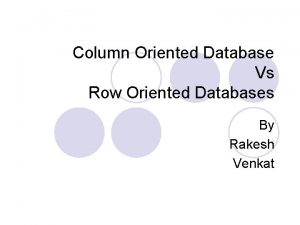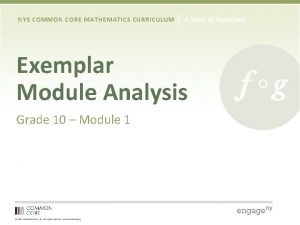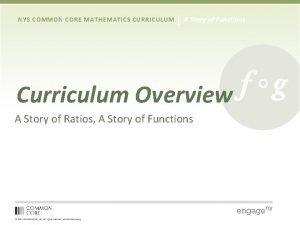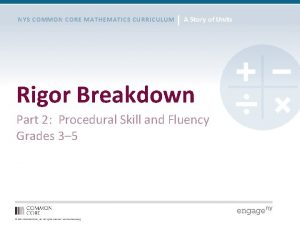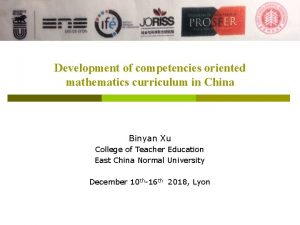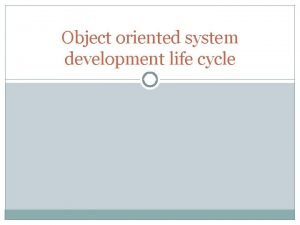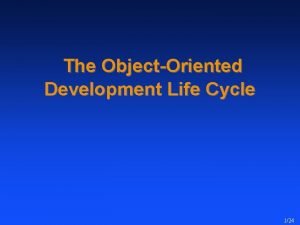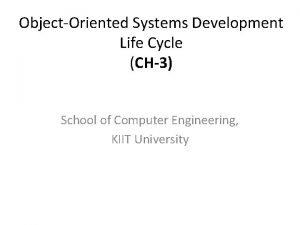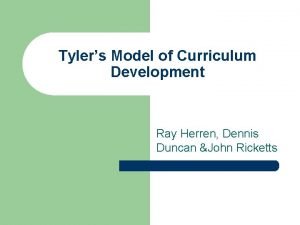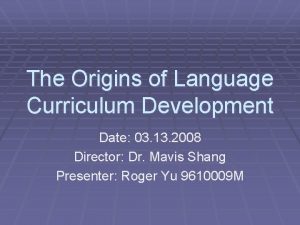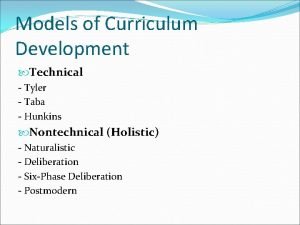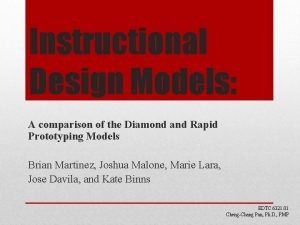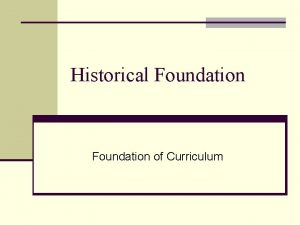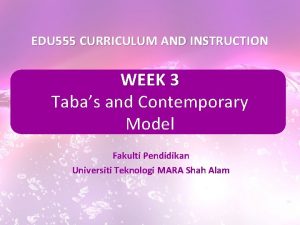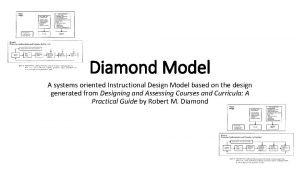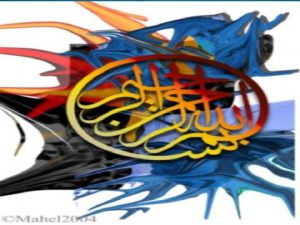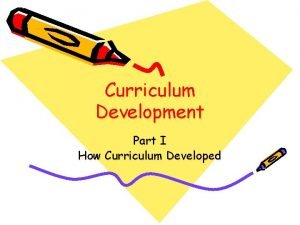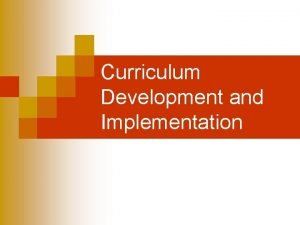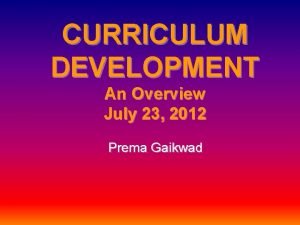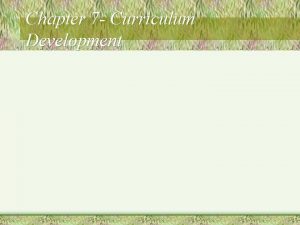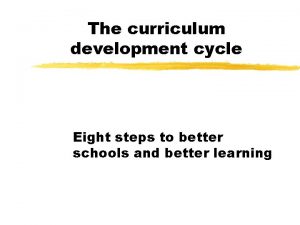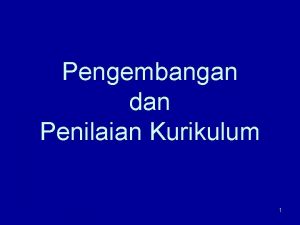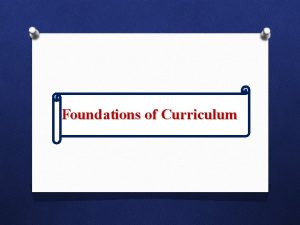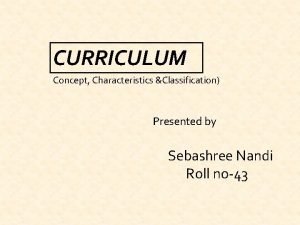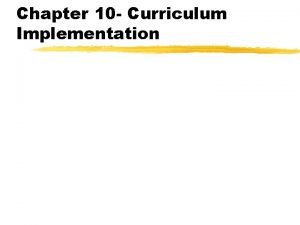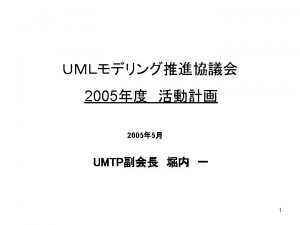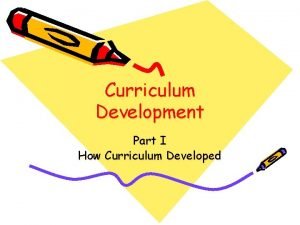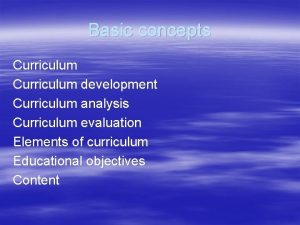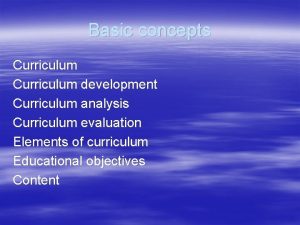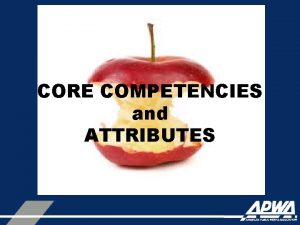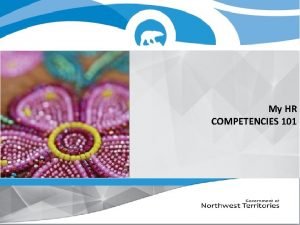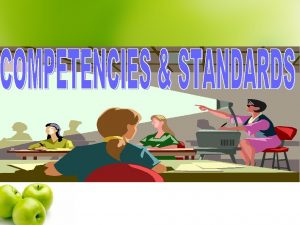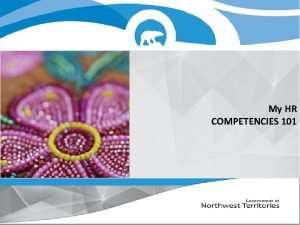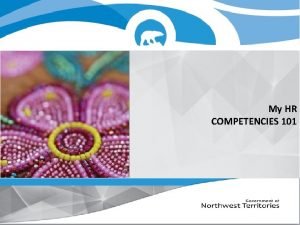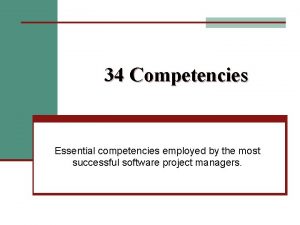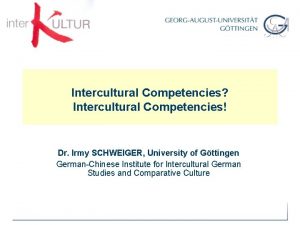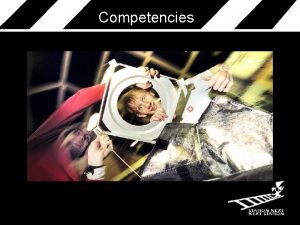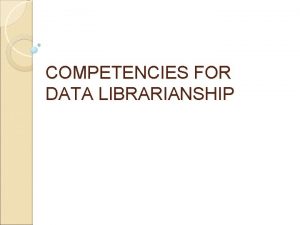Development of competencies oriented mathematics curriculum in China


























![p p p [Comment] In the actual situation, the graph can be used to p p p [Comment] In the actual situation, the graph can be used to](https://slidetodoc.com/presentation_image/d13cffe732efb43bf679fb1b3c789d6b/image-27.jpg)

![p p [Comment] If the calculation of (1) can be completed, it can be p p [Comment] If the calculation of (1) can be completed, it can be](https://slidetodoc.com/presentation_image/d13cffe732efb43bf679fb1b3c789d6b/image-29.jpg)



- Slides: 32

Development of competencies oriented mathematics curriculum in China Binyan Xu College of Teacher Education East China Normal University December 10 th-16 th 2018, Lyon

p The newest development p When and Why? p What?

The newest development p p p The revised version of the High School Mathematical Curriculum Standards (2017 Edition) (MOE 2018) was released in January 2018 (2017 Standards, hereafter). The version High School Mathematics Curriculum Standards (Experimental version) was published in 2003 (hereafter referred to as the 2003 Standards; MOE 2003). At the end of the twentieth century, China decided to improve the quality of its educational system so that it would prepare its citizens with the knowledge and skills required to meet the demands of an increasingly globalized world.

When and Why p At the end of 2014, the MOE launched the work of revising curricula for all high school subjects (MOE 2014 b, December 8). p One reason related to the government’s requirement; the another was based on the national survey.

the government’s requirement p p In response to the government’s requirement for the visible development of citizens, the MOE proposed and released its Suggestions for Fully Deepening the Curriculum Reform and Practising the Fundamental Mission of Citizen Development (MOE 2014 a, April 8) to guide basic education in China. It was announced that the “MOE would organise studies to promote students at each school level to develop a core competency system, and to develop characteristics and core abilities that would enable students to adapt to lifelong learning and meet the requirements of social development”.


core competency system includes: p p p Cultural cultivation n humanistic connotation (humane feelings, aesthetic appeal) n scientific spirit (rational thinking, critical thinking , be brave in inquiring) Self-development n Learning to learn (interesting in learning, be diligent in reflection, identifying information) n Living healthy (healthy personality, self management) Social Participation n Responsibility bearing (national identify, international understanding) n Practice innovation (labor consciousness, technical application)

National survey on curriculum implementation p ECNU mathematics education team got this task from the MOE in China, Bao etc. developed survey framework which included the following aspects: Ø Curriculum design: properties of the curriculum, objectives, structure… Curriculum content: difficulty level, systematical structure of content… Curriculum implementation: teaching situation, textbooks, teacher… Curriculum evaluation: assessment tool, examination… Ø Ø Ø

Methods: group / individual interview, questionnaire survey, content analysis p Participants: teachers, students, school leaders, teaching inspectors, textbook editors, administrators p

p Ø Ø Ø Some results which contributed to modification of the standard The modules and sequence of content should be modified in order to reach cohesion of content (connection between compulsory and optional modules) The important math skills (arithmetic, reasoning, spatial imagination) should be paid more attention Students still had heavy learning burden Teachers focused more on training math skills than fostering competencies The standard played very weak role in developing university entrance examination ….

p The both reasons pushed forward and guided the improvement / development of high school math curriculum.

What happened mainly? Revise curriculum objectives focused on core competencies p Revise curriculum structure p Revise curriculum evaluation p

curriculum objectives in 2017 standard To obtain basic knowledge, basic skill, basic thought and activity experience (four basic ) p To enhance abilities of discovering and posing problems mathematically, of analyzing and solving problems (four abilities) p

p To develop mathematics core competencies including mathematical abstraction, logic reasoning, mathematical modelling, intuitive imagination, mathematical operation and data analysis. p To improve learning interesting in mathematics, self confidence in learning mathematics, to develop selflearning abilities, to cultivate scientific spirits of criticizing, thinking, rigorous fact attitude…. to improve practical and innovative abilities…

p p Compare to 2003 standard, the 2017 standard emphasized 6 core mathematics competencies explicitly The core mathematics competencies were defined as “necessary thinking quality and key abilities that related to mathematics, for students to adapt to life-long development and social development” and were “based on social participation, self-development, and cultural cultivation”(government requirement).

core mathematics competencies Mathematical abstraction to form mathematical concepts and rules; to form mathematical proposition and model, to form mathematical methods and thinking, to form mathematical structure and system… logical reasoning to discover and pose proposition; to master basic reasoning forms; to explore and represent argumentation process… intuitive imagination to describe and understand mathematics problems using graph; to explore and solve problems, to construct mathematical intuitive models… mathematical modelling to discover and pose problems, to construct models to solve model, and to examine and modify math model… mathematical operation to understand operational objects; to master arithmetic rules, to explore arithmetic process… data analysis to obtain data, to analyze data, construction of knowledge…

p these six core competencies could help develop “mathematical perspectives to observe the world”, for which mathematical abstraction and intuitive imagination play important roles; p “the ability to think mathematically about the world”, for which logical reasoning and mathematics operation are necessary; p and “mathematical language to express the world”, which needs mathematical modelling and data analysis.

Revise curriculum structure p 2003 standard set up such module structure

p The survey showed that teachers were unprepared to implement the modules curriculum. p The structure in the 2017 standard follows the principles of common basic and diversified option, it includes compulsory curriculum and optional curriculum. n n n Compulsory curriculum consists of 5 topics (knowledge for preparing, function, geometry and algebraic, possibility and statistics, mathematical modeling and mathematical inquiring) Optional compulsory curriculum consist of function, geometry and algebraic, possibility and statistics, mathematical modeling and mathematical inquiring Optional curriculum provides students with free selection according their own interesting in mathematics.

p p p Curriculum A is constructed for students with interesting in math or sciences Curriculum B is constructed for students who have interesting in economic, society oriented research Curriculum C is designed for students who want to learn humanistic subjects (language, history) Curriculum D is designed for students who are good at sport or arts Curriculum E focuses on extending perspectives, local specific curriculum, and also AP curriculum

Revise curriculum evaluation p In the 2003 standard, Evaluation principles were mentioned in general. It pays attention to n n n p p Students’ mathematics learning processes, Students’ fundamental knowledge and basic skills Students’ abilities It also emphasized the implementation of multifarious evaluation that promotes student development. But based on survey results, mathematics curriculum still paid attention to the summative assessment, instead of formative assessment, the curriculum is more oriented on final examination.

p p According to 2017 version standard, the curriculum focuses on “learning achievement”, and sets up three achievement levels which concern performances of mathematics competencies. The 2017 standard sets up four aspects of students’ performances of math competencies n n Context and problem Knowledge and skill Thinking and representation Communication and reflection

p Three achievement levels have been described, focused on math competencies, using the four aspects, as well as based on mathematics content. Cited from Bao’s representation

For example, focused on mathematical abstraction and using aspect “context and problem”, the achievement level could be described: Achievement level one able to abstract mathematical concepts and rules directly in familiar situations; able to use inductive or analogical methods to discover the properties of graph and quantity, quantitative relationships, or graphical relationships, to form simple mathematical propositions; able to describe the geometrical graph of the object, establish the connection between the simple graph and the object, and experience the relationship between the graph and the graph, the graph and the quantity; Achievement level two In the related context, able to abstract general mathematical concepts and rules, determine operational objects and random phenomena, find problems and propose or translate them into mathematical problems; Able to imagine and construct the corresponding geometric graph, find the relationship between graphics and graphics, graphics and quantity, and explore the motion law of graphics; able to understand that induction and analogy is an important way to discover and propose mathematical propositions Achievement level three able to discover mathematical relationships in contexts in a comprehensive context, find appropriate research objects with mathematical perspectives, express them in appropriate mathematical language, and use mathematical thinking to analyze and propose mathematical problems; able to explore the ideas of solving problems by means of graphics; able to form new propositions based on the obtained mathematical conclusions.

Relationship between achievement and examination The 2017 Standard explains that p p n n n the achievement level one should be reached by all high school graduates the achievement level two is the basis of developing university entrance examination the achievement level three could be reference for independent recruitment of university

Example 1 The distance between school dormitory and office is a m. A classmate has important materials to give to the teacher. From the dormitory, he ran 3 minutes to the office at a constant speed, stayed for 2 minutes, then walked 10 minutes to the dormitory at a constant speed. Draw a schematic diagram of the velocity function and the path function.
![p p p Comment In the actual situation the graph can be used to p p p [Comment] In the actual situation, the graph can be used to](https://slidetodoc.com/presentation_image/d13cffe732efb43bf679fb1b3c789d6b/image-27.jpg)
p p p [Comment] In the actual situation, the graph can be used to reveal the function properties, and reflect overall the basic characteristics of the function. When answering this question, you can give most of the schematic diagrams of the speed function or the path function, then can be considered to meet the requirements of the mathematical abstract competence level one. Can fully draw the speed function and the path function graph (the two independent variables are consistent), then can be considered to meet the requirements of mathematical abstract competence level two

Example 2 The inner ring of the 400 -meter standard runway is shown in Figure, where the left and right sides are half-arcs with a radius of 36 meters. (1)Find the length of each straight (The pi is 3. 14, and the result is accurate to 1 meter. ) (2)Establish a plane rectangular coordinate system x. Oy, Write the function analytic corresponding to the upper half of the runway
![p p Comment If the calculation of 1 can be completed it can be p p [Comment] If the calculation of (1) can be completed, it can be](https://slidetodoc.com/presentation_image/d13cffe732efb43bf679fb1b3c789d6b/image-29.jpg)
p p [Comment] If the calculation of (1) can be completed, it can be considered that the requirement of intuitive imagination level 1 can be achieved. The ability to basically obtain the expression required by (2) can be considered to meet the requirements of the intuitive imagination level 2. This question can also be examined for mathematical operations and other competencies. p The answer to this question is as follows


p Nowadays we meet new challenges of curriculum development. n n n Four basic, four abilities and six competencies Mathematics competencies and three achievement levels Achievement evaluation and final examination Textbooks based on 2017 standard are under construction p The implementation of this standard will be launched earliest in next year p

Many thanks 谢谢!
 Analytic rubrics for design a museum exhibit
Analytic rubrics for design a museum exhibit Entrepreneurial competence
Entrepreneurial competence Porfolio assessment
Porfolio assessment Task designing in product-oriented assessment examples
Task designing in product-oriented assessment examples Consumer oriented vs trade-oriented sales promotion
Consumer oriented vs trade-oriented sales promotion What is a column row db
What is a column row db Nys common core
Nys common core Whats common
Whats common Nys common core mathematics curriculum
Nys common core mathematics curriculum China math curriculum
China math curriculum Object oriented systems development life cycle
Object oriented systems development life cycle Object oriented development life cycle
Object oriented development life cycle Object oriented development life cycle
Object oriented development life cycle Comparative development experiences of india and china
Comparative development experiences of india and china China aerodynamics research and development center
China aerodynamics research and development center Taba theory
Taba theory Tylers model
Tylers model The origins of language curriculum development
The origins of language curriculum development Hunkins model of curriculum development
Hunkins model of curriculum development Diamond model of curriculum development
Diamond model of curriculum development Historical basis of curriculum
Historical basis of curriculum Strengths and weaknesses of taba's curriculum model
Strengths and weaknesses of taba's curriculum model Robert diamond
Robert diamond Process of curriculum development in pakistan
Process of curriculum development in pakistan Example of taba model
Example of taba model Phases of curriculum development
Phases of curriculum development Curriculum development process
Curriculum development process Models for curriculum development
Models for curriculum development What is curriculum cycle
What is curriculum cycle Siklus perencanaan dalam kurikulum
Siklus perencanaan dalam kurikulum Sociological bases of curriculum
Sociological bases of curriculum Hidden curricullum
Hidden curricullum Organizational development model in curriculum
Organizational development model in curriculum





